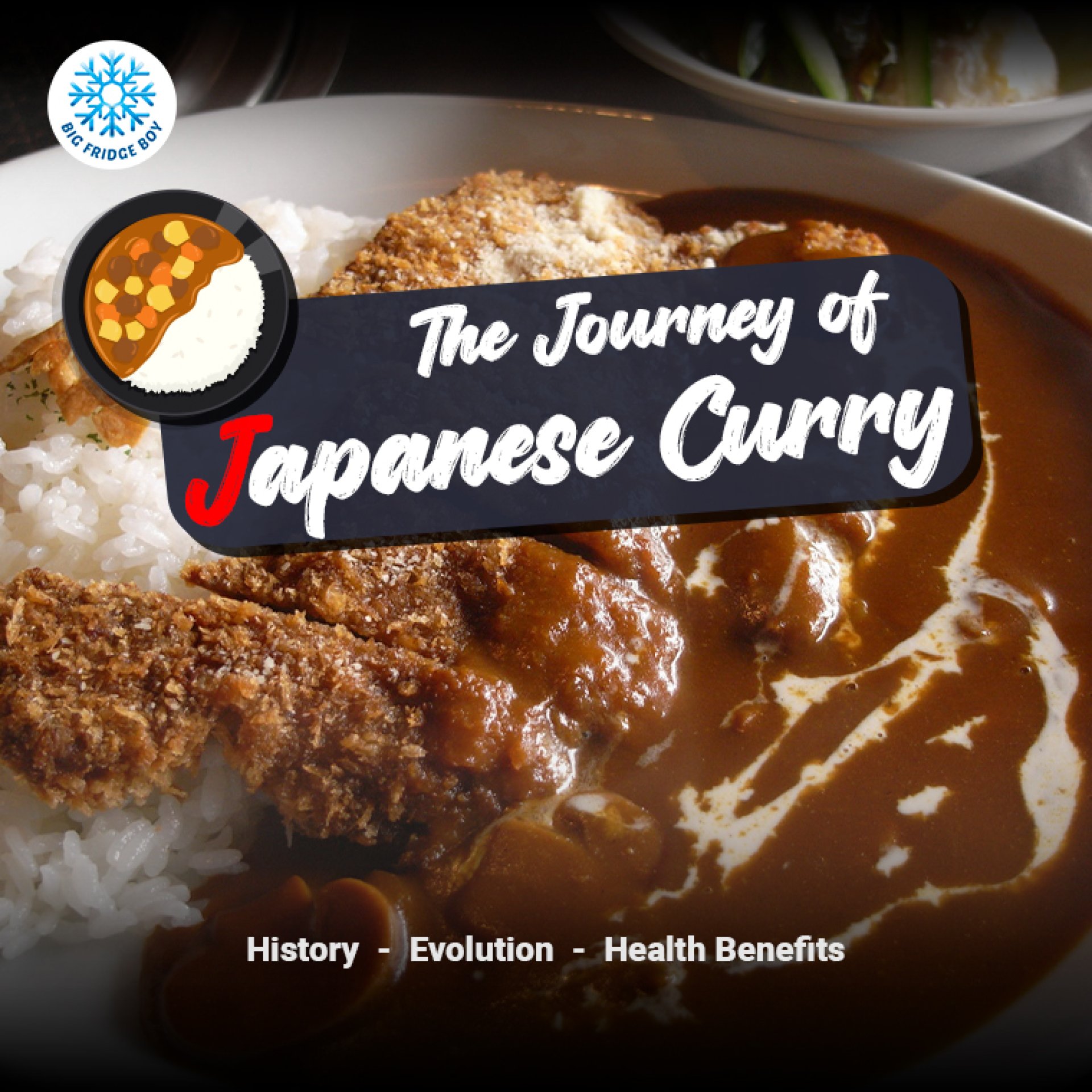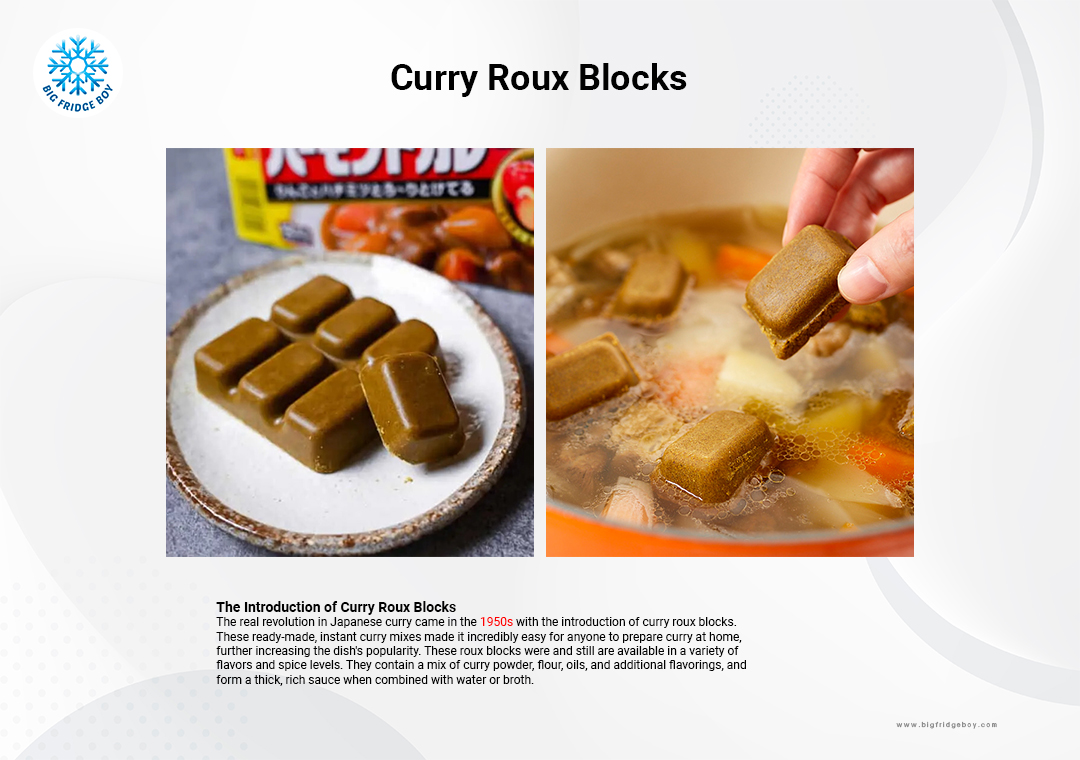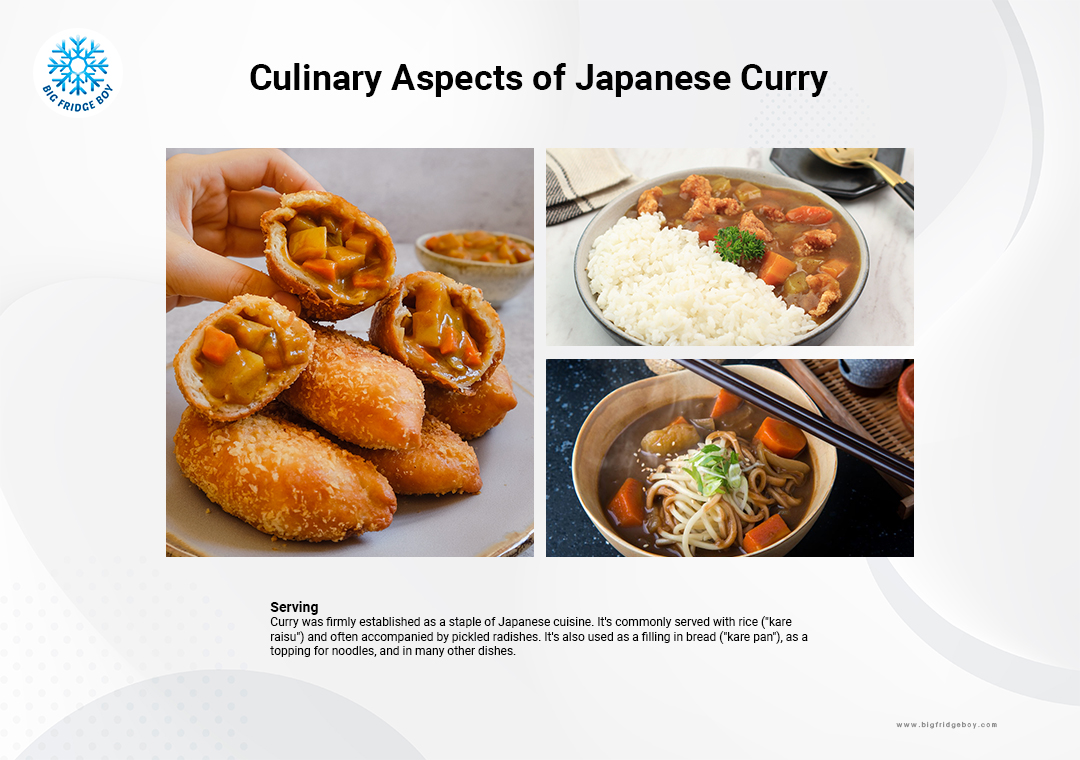"The Journey of Japanese Curry: History, Evolution, and Health Benefits,"

Japanese curry, known in Japan as "kare," is a popular dish that is distinct from other forms of curry found around the world. It's a relatively new dish in the grand scheme of Japan's long culinary history, with its roots in the Meiji era (1868-1912).
Japanese curry is written as "カレー" in Japanese, and it's pronounced as "kare." The term comes from the English word "curry," but has been adapted to fit the phonetic system of the Japanese language.
Beginning
The history of curry in Japan began in the late 19th century, during the Meiji era when Japan ended its period of national isolation and began to adopt various elements of Western culture. As part of the efforts to modernize and westernize the country, Western-style food, known as "yōshoku," was introduced into Japanese society. Curry was introduced to Japan by the British, who were enjoying the dish themselves thanks to their colonial presence in India.
The British Navy had adopted curry as a standard dish, and the Japanese Imperial Navy followed suit, seeing the nutritional value of a one-pot meal that could be easily prepared in large quantities. It was also a practical choice as it didn't spoil easily, making it suitable for long naval voyages. This curry was more of a stew with a slight hint of spices rather than what we know as curry today.
Early 20th Century
In the early 20th century, curry started to be served in school lunches, which greatly increased its popularity and familiarity among the Japanese population. As curry became more widespread in Japan, the recipe was adapted to suit Japanese taste preferences. The heavy use of spices was toned down, and it became sweeter and milder than its Indian and British counterparts.

The Introduction of Curry Roux Blocks
The real revolution in Japanese curry came in the 1950s with the introduction of curry roux blocks. These ready-made, instant curry mixes made it incredibly easy for anyone to prepare curry at home, further increasing the dish's popularity. These roux blocks were and still are available in a variety of flavors and spice levels. They contain a mix of curry powder, flour, oils, and additional flavorings, and form a thick, rich sauce when combined with water or broth.

Curry was firmly established as a staple of Japanese cuisine. It's commonly served with rice ("kare raisu") and often accompanied by pickled radishes. It's also used as a filling in bread ("kare pan"), as a topping for noodles, and in many other dishes.
Today, Japanese curry is enjoyed in homes and restaurants across Japan and has gained popularity around the world. It is often customized with a variety of ingredients, such as chicken, pork, beef, seafood, and a wide array of vegetables.
Health Benefits
Japanese curry is a hearty dish that can offer a variety of health benefits due to the ingredients used in it. Here are some of the potential health benefits.
- Rich in Nutrients
When prepared with a variety of vegetables and lean proteins, Japanese curry can be a balanced meal offering a good mix of carbohydrates, protein, and fiber. Vegetables like carrots, potatoes, and onions provide essential vitamins and minerals, while proteins like chicken or tofu contribute to your daily protein intake. - Turmeric
Curry powder, a key ingredient in Japanese curry, usually contains turmeric. Turmeric is known for its anti-inflammatory and antioxidant properties due to a compound it contains called curcumin. - Spices
The blend of spices used in Japanese curry not only provides flavor, but it can also offer health benefits. For instance, spices like cumin, coriander, and cardamom have been associated with improved digestion and anti-inflammatory properties. - Heart Health
If prepared with lean proteins and a low amount of sodium, Japanese curry can be part of a heart-healthy diet. Additionally, research suggests that some spices used in curry powder may have heart-healthy benefits, such as lowering inflammation and preventing plaque buildup in the arteries. - Digestive Health
The spices used in Japanese curry may aid digestion. Ginger, for example, is known to help soothe digestive discomfort and promote gastric emptying. - Immune Support
Many of the spices used in curry, such as turmeric and ginger, are known to support immune health, potentially boosting your body's ability to fight off illness. - Weight Management
Japanese curry can be a satisfying and filling meal, which may help you feel full longer and curb overeating.
Remember, while Japanese curry can offer health benefits, it can also be high in sodium and fat, particularly when premade curry roux blocks are used or when served with breaded and fried foods (like tonkatsu). As with any dish, moderation, and balance are key to a healthy diet.





